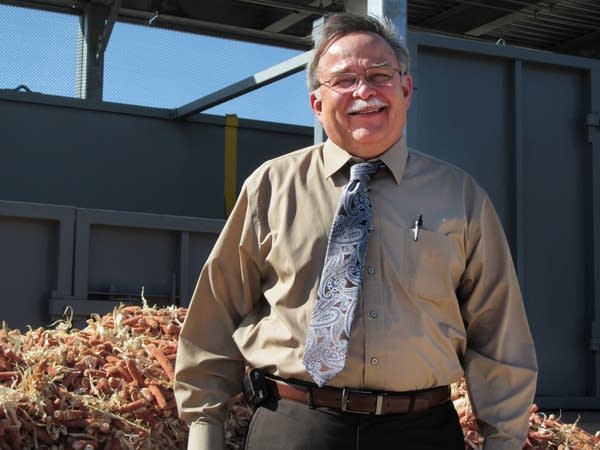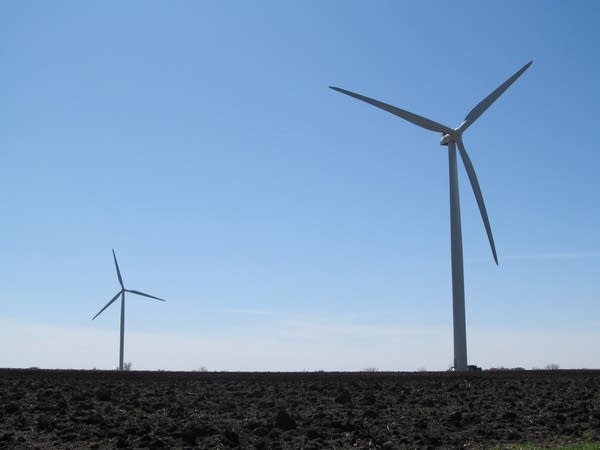At U of M-Morris, alternative energy on par with low-priced fossil fuels
Go Deeper.
Create an account or log in to save stories.
Like this?
Thanks for liking this story! We have added it to a list of your favorite stories.

Officials at the University of Minnesota Morris were thrilled to find out this week that even with natural gas prices at 10-year lows, heating the campus with biomass was a competitive alternative to burning fossil fuels.
The news puts the university even further down the path of cutting its carbon emissions. It also affirms the school's place as one of the nation's most sustainable campuses.
The school's energy strategy relies on corn cobs. Piled next to the old brick power plant, they look a little out of place. But the corn cobs play a critical role in heating and cooling the university, said Lowell Rasmussen, vice chancellor for finance and facilities.
Inside the power plant, Rasmussen points to a huge machine that looks like a furnace, called a gasifier.
Turn Up Your Support
MPR News helps you turn down the noise and build shared understanding. Turn up your support for this public resource and keep trusted journalism accessible to all.
Once inside the gasifier, the corn cobs are burned at about 1,200 degrees farenheit with just a little oxygen. The gas they create is a low-quality natural gas that is then pumped into boilers that heat university buildings. It's a form of renewable energy called biomass.
Before the winter, Rasmussen was concerned that with natural gas prices being so low it would be more expensive to use the corn cobs to heat buildings than natural gas, a fossil fuel.
"Our gas costs would've been $62,000 for the month of December," he said. "Our corn cob costs would've been $68,000 for the month of December. So there's a $6,000 premium if you will for using corn cobs."

When natural gas prices are higher, burning corn cobs saves the university money.
Even though Morris is paying more for biomass, there are other factors to consider that the numbers don't capture, Rasmussen said. Among them are the economic benefits to the community when the university buys corn cobs from a local farmer instead of using natural gas from out of state.
The process also generates between $2,000 and $3,000 a month in electricity.
"Even with gas prices as low as they are right now we think that we're pretty competitive using biofuels," Rasmussen said.
University officials first thought of investing in renewable energy in 2001, when natural gas prices were hitting all-time highs.
This year, Morris is on track to create half of its heat and air conditioning from renewable energy sources. That's on top of the 60 percent to 70 percent of electricity already generated from two wind turbines.
The combined efforts have made Morris one of the most sustainable campuses in the country. Already there are three or four days a month the school is completely off the grid — creating all the energy it needs to power one million square-feet of building space.
Morris this year could create half of its heat and air conditioning from renewable energy sources, in addition to 60 to 70 percent of electricity generated from wind turbines.
"We have here what is really a demonstration platform for a community based, distributed system of renewable energy," Morris campus Chancellor Jacquie Johnson said.
State funding allowed the Morris campus to move to alternative energy sources. About half of the $8 million for the gasifier came from a state bonding bill.
In February, the Association for the Advancement of Sustainability in Higher Education named Morris among the 30 most sustainable campuses in the country.
Even though Morris campus had the state's support, its "obtainable and realistic" for other colleges, said Paul Rowland, the association's executive director.
"They have really shown how to take money [and] invest it wisely," Rowland said. "They are not going to be spending as much money in future years on energy costs as institutions that haven't taken those kinds of steps."
Campus officials already are looking to next year when they plan to create even more of energy from corn cobs.




